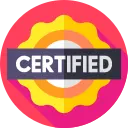FREE
daily Instructor: Dr. Elizabeth FryCourse Overview
Understanding Career Stagnation
Defining and Identifying Stagnation
- Recognizing the key indicators of career stagnation, including a lack of skill development, limited opportunities for advancement, and decreased job satisfaction. For example, consistently receiving the same performance reviews without significant improvement areas identified, or feeling that your skills are not being fully utilized in your current role, are potential signs of stagnation.
- Differentiating between short-term plateaus and long-term stagnation. A plateau might involve a temporary lull in new challenges, while stagnation indicates a prolonged period of limited growth and progression.
- Evaluating the impact of external factors, such as industry trends and economic conditions, versus internal factors, such as personal motivation and skill gaps, on career stagnation.
Root Causes of Stagnation
- Analyzing organizational factors contributing to stagnation, such as limited promotion opportunities, lack of training and development programs, and ineffective performance management systems.
- Identifying personal factors that can lead to stagnation, including skill obsolescence, lack of networking, fear of change, and poor career planning.
- Examining the role of organizational culture in fostering or hindering career growth, considering factors like mentorship programs, internal mobility policies, and employee recognition systems.
Self-Assessment and Skills Gap Analysis
Conducting a Thorough Self-Assessment
- Using validated assessment tools to evaluate skills, interests, values, and personality traits to gain a comprehensive understanding of your strengths and weaknesses.
- Identifying accomplishments and areas where you've excelled in past roles to understand your core competencies and preferred work styles.
- Assessing your level of job satisfaction and identifying the factors contributing to or detracting from your overall happiness at work. This includes considering aspects like work-life balance, company culture, and alignment with personal values.
Identifying Skills Gaps and Development Needs
- Analyzing the required skills for your desired career path and comparing them to your current skill set to pinpoint specific areas needing improvement.
- Evaluating the relevance of your existing skills in the context of evolving industry demands and technological advancements. For example, in the field of marketing, assessing your understanding of AI-powered marketing tools.
- Prioritizing skills development based on impact and feasibility, focusing on areas that will significantly enhance your career prospects and align with your long-term goals.
Strategic Career Planning
Setting SMART Career Goals
- Defining specific, measurable, achievable, relevant, and time-bound career goals that provide a clear roadmap for your future. For example, instead of 'becoming a manager,' set a goal like 'Get promoted to project manager within 18 months by completing a project management certification and leading a team on a cross-functional project'.
- Developing a detailed action plan outlining the specific steps you need to take to achieve your goals, including acquiring new skills, networking with industry professionals, and seeking out mentorship opportunities.
- Regularly monitoring your progress and adjusting your plan as needed to stay on track and adapt to changing circumstances.
Networking and Building Relationships
- Identifying key individuals in your field or organization who can provide guidance, support, and opportunities for advancement.
- Developing a strategic networking plan that includes attending industry events, joining professional organizations, and connecting with people online through platforms like LinkedIn.
- Building and maintaining strong relationships with your network through regular communication, offering assistance when possible, and actively listening to their perspectives.
Crafting a Personal Brand
- Defining your unique value proposition and how you stand out from other professionals in your field.
- Creating a consistent and compelling personal brand across all online and offline platforms, including your resume, LinkedIn profile, and elevator pitch.
- Actively managing your online reputation by sharing valuable content, engaging in meaningful conversations, and showcasing your expertise.
Taking Action and Overcoming Obstacles
Seeking Out New Opportunities
- Identifying potential opportunities within your current organization, such as lateral moves, special projects, or cross-functional assignments, that can help you expand your skills and broaden your experience.
- Actively searching for external job openings that align with your career goals and skill set.
- Preparing for interviews by practicing your communication skills, researching the company, and highlighting your accomplishments.
Developing a Growth Mindset
- Embracing challenges as opportunities for learning and growth, rather than viewing them as threats or obstacles.
- Cultivating a belief in your ability to improve your skills and abilities through hard work, dedication, and perseverance.
- Learning from failures and setbacks, using them as valuable lessons to guide your future actions.
Overcoming Fear of Change
- Identifying the root causes of your fear of change, such as uncertainty, lack of control, or fear of failure.
- Developing coping mechanisms for dealing with anxiety and stress associated with change, such as mindfulness techniques, deep breathing exercises, and positive self-talk.
- Breaking down large changes into smaller, more manageable steps to reduce feelings of overwhelm and increase your sense of control.
FlashCards
External Resources
Add-On Features
Expert Instructor
Get live study sessions from experts
Honorary Certification
Receive a certificate before completing the course.
Currency
Sign in to change your currency
I'm not ready to enroll?
Tell us why, because it matters.
Enroll With a Key
Course Benefits
Get a Job
Use your certificate to stand out and secure new job opportunities.
Earn More
Prove your skills to secure promotions and strengthen your case for higher pay
Learn a Skill
Build knowledge that stays with you and works in real life.
Lead Teams
Use your certificate to earn leadership roles and invitations to industry events.
Visa Support
Use your certificate as proof of skills to support work visa and immigration applications.
Work on Big Projects
Use your certificate to qualify for government projects, enterprise contracts, and tenders requiring formal credentials.
Win Partnerships
Use your certified expertise to attract investors, get grants, and form partnerships.
Join Networks
Use your certificate to qualify for professional associations, advisory boards, and consulting opportunities.
Stand Out Professionally
Share your certificate on LinkedIn, add it to your CV, portfolio, job applications, or professional documents.
Discussion Forum
Join the discussion!
No comments yet. Sign in to share your thoughts and connect with fellow learners.
Frequently Asked Questions
For detailed information about our Navigating Career Stagnation for Employees course, including what you’ll learn and course objectives, please visit the "About This Course" section on this page.
The course is online, but you can select Networking Events at enrollment to meet people in person. This feature may not always be available.
We don’t have a physical office because the course is fully online. However, we partner with training providers worldwide to offer in-person sessions. You can arrange this by contacting us first and selecting features like Networking Events or Expert Instructors when enrolling.
Contact us to arrange one.
This course is accredited by Govur University, and we also offer accreditation to organizations and businesses through Govur Accreditation. For more information, visit our Accreditation Page.
Dr. Elizabeth Fry is the official representative for the Navigating Career Stagnation for Employees course and is responsible for reviewing and scoring exam submissions. If you'd like guidance from a live instructor, you can select that option during enrollment.
The course doesn't have a fixed duration. It has 25 questions, and each question takes about 5 to 30 minutes to answer. You’ll receive your certificate once you’ve successfully answered most of the questions. Learn more here.
The course is always available, so you can start at any time that works for you!
We partner with various organizations to curate and select the best networking events, webinars, and instructor Q&A sessions throughout the year. You’ll receive more information about these opportunities when you enroll. This feature may not always be available.
You will receive a Certificate of Excellence when you score 75% or higher in the course, showing that you have learned about the course.
An Honorary Certificate allows you to receive a Certificate of Commitment right after enrolling, even if you haven’t finished the course. It’s ideal for busy professionals who need certification quickly but plan to complete the course later.
The price is based on your enrollment duration and selected features. Discounts increase with more days and features. You can also choose from plans for bundled options.
Choose a duration that fits your schedule. You can enroll for up to 180 days at a time.
No, you won't. Once you earn your certificate, you retain access to it and the completed exercises for life, even after your subscription expires. However, to take new exercises, you'll need to re-enroll if your subscription has run out.
To verify a certificate, visit the Verify Certificate page on our website and enter the 12-digit certificate ID. You can then confirm the authenticity of the certificate and review details such as the enrollment date, completed exercises, and their corresponding levels and scores.
Can't find answers to your questions?
Certification Guide

Complete the Course
Begin the course by selecting your experience level in the course content section:
Beginner: Master the material with interactive questions and enough time.
Intermediate: Get certified faster with hints and balanced questions.
Advanced: Challenge yourself with more questions and less time

Earn Your Certificate
To download and share your certificate, you must achieve a combined score of at least 75% on all questions answered.





